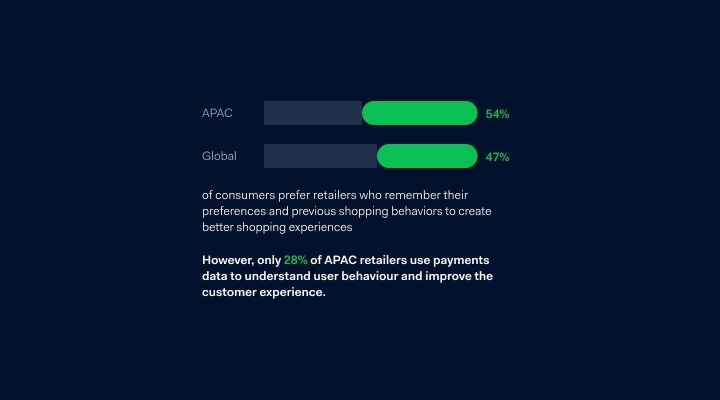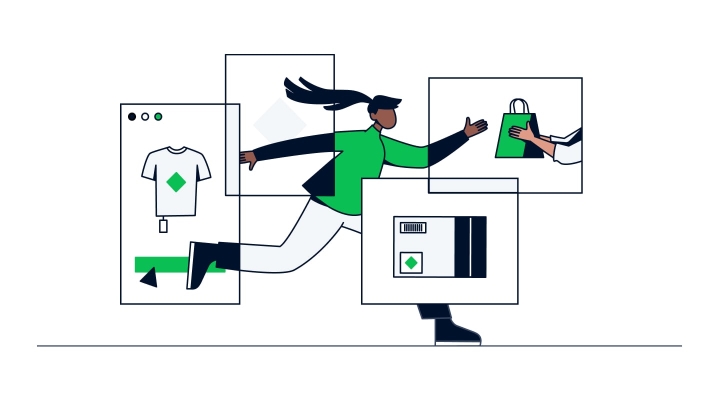When you’re a brand that’s sitting amongst a sea of other brands, all competing for the attention of the same demanding customers, offering a unique retail experience is no easy task.
“Since the pandemic hit, consumers’ expectations have also gone through the roof and physical stores need to do more than just house inventory to offer a personalised shopping experience,” said Priyanka Gargav, head of commercial SEA & Hong Kong, at Adyen. “However, savvy retailers know that they can gain a competitive advantage by rebooting their loyalty programs and deep-diving into payments data.”
For omnichannel retailers, it may be easy to analyse customer data when people shop online, but it’s a big struggle to understand their in-store shopper behaviour unless staff ask customers to provide their details at checkout. But viewing payments data makes it possible to gain a more accurate, single view of how customers shop, whether it’s on or offline or even on an app.
Here are just a few ideas on how retailers can unlock the power of data within their businesses.
Levelling up on loyalty
Apac consumers are well-known for their love of loyalty programs for everything from fashion and beauty to groceries and cafes and even the doctor. But it’s time that loyalty programs undergo a shake-up to cater to the modern customer.
By digging deep into their customers’ payment data, there is an opportunity for retailers to create a more personalised, relevant program for their most loyal customers.

According to Adyen’s report, 74 per cent of Apac consumers would like retailers to use more technology to make their loyalty or rewards schemes easier and more effective. Meanwhile, 64 per cent claimed they would download a retailer’s app in order to receive better loyalty rewards and 63 per cent would like loyalty programs to work automatically through their payment card.
Customer recognition is one way that can improve the experience. For example, when customers make a payment online or in-store, businesses can automatically recognise them and award them with points, discounts or a reward.
At the peak of the pandemic, European beverage chain Joe and the Juice focused its energies on its mobile app, particularly in the UK, where customers weren’t even allowed to use contactless payments at one point.
“You can pre-order from your home or you can order in store. You can pay via the terminal or in-app. It doesn’t matter. We’ve created this flexibility by connecting our payment data in the back-end,” said Thomas Evald, Joe and the Juice’s VP of strategy and business development.
“It lets us connect the best of both worlds to deliver an even better service. It also lets us see the whole picture in one place and evaluate our performance. That’s amazing for us.”
Doing the data
From Netflix to Amazon and Spotify, personalisation has become an inherent part of our lifestyles and when it comes to retail, customers now want to shop with brands who understand what they want to buy, how they want to buy it and when it should all take place.
According to Adyen’s report, 54 per cent of Apac consumers prefer retailers who remember their preferences and past shopping behaviours to offer a more customised shopping experience and 52 per cent enjoy the personalised ads and suggestions that some retailers offer them.
Fortunately, real-time data can empower businesses to recognise, predict and meet their customers’ needs in a relevant and timely manner. Retailers can also find out what kinds of products a customer likes to purchase, popular product lines, inform inventory management, create personalised campaigns and more.

However, only 28 per cent of Apac retailers are effectively using their payments data to help boost the customer experience. This means that those savvy businesses that embrace payments data will have a clear competitive advantage over other brands.
“Payments data enables businesses to build a picture of their customers, their purchases, and their preferences in real-time, across every channel and region,” stated Adyen’s report. “With these insights, businesses can investigate their customer segments, understand their behaviour, and shape their strategy with confidence.”
Want to find out more about Adyen’s Retail Reports? Access them below:






